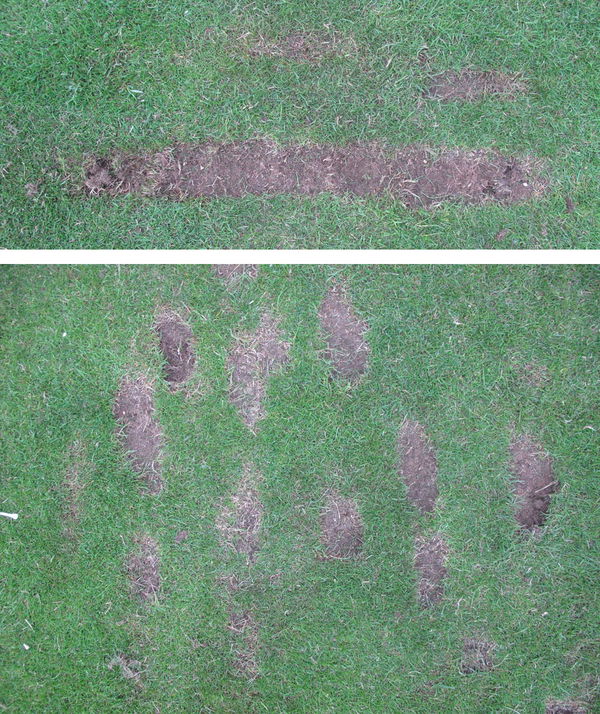Golf Practice Drills: the perfect divot
Even a divot can tell you something about your swing...

The perfect divot drill is our first drill in the General Practice Drills series.
If you're fortunate enough to practice on a grass-based range then analysing your divot is a great tool for assessing your swing.
In the photograph, you can see the bottom spread of divots, each varying in depth, width and none are joined together.
The top image shows how divots should be used as practice guides. Each shot has been hit just in front of the last divot, allowing the golfer to know where they're aiming and the consistency of their swing path.
So as a drill, try and get the perfect divot line, each with similar depth, width, and length so you know your swing path is fine.
If you don't have the benefit of a grass practice range then assess your divots on the round. Always look to see if the divot is deep or narrow.
A narrow divot will mean the club has turned at impact; a hook or slice will be the probable result. A deep divot could mean you're hitting down on the ball rather than stroking it off the top.
And of course, make sure you replace the divots on the round so the groundsman doesn't come after you.
Want anymore tips? Check out our General Practice Drills index or Golf Practice Drills index for more help.
��
Sponsored Posts
Latest News
![Lexi Thompson [Instagram]](https://cdn.golfmagic.com/2025-04/le122.jpg?width=400)










